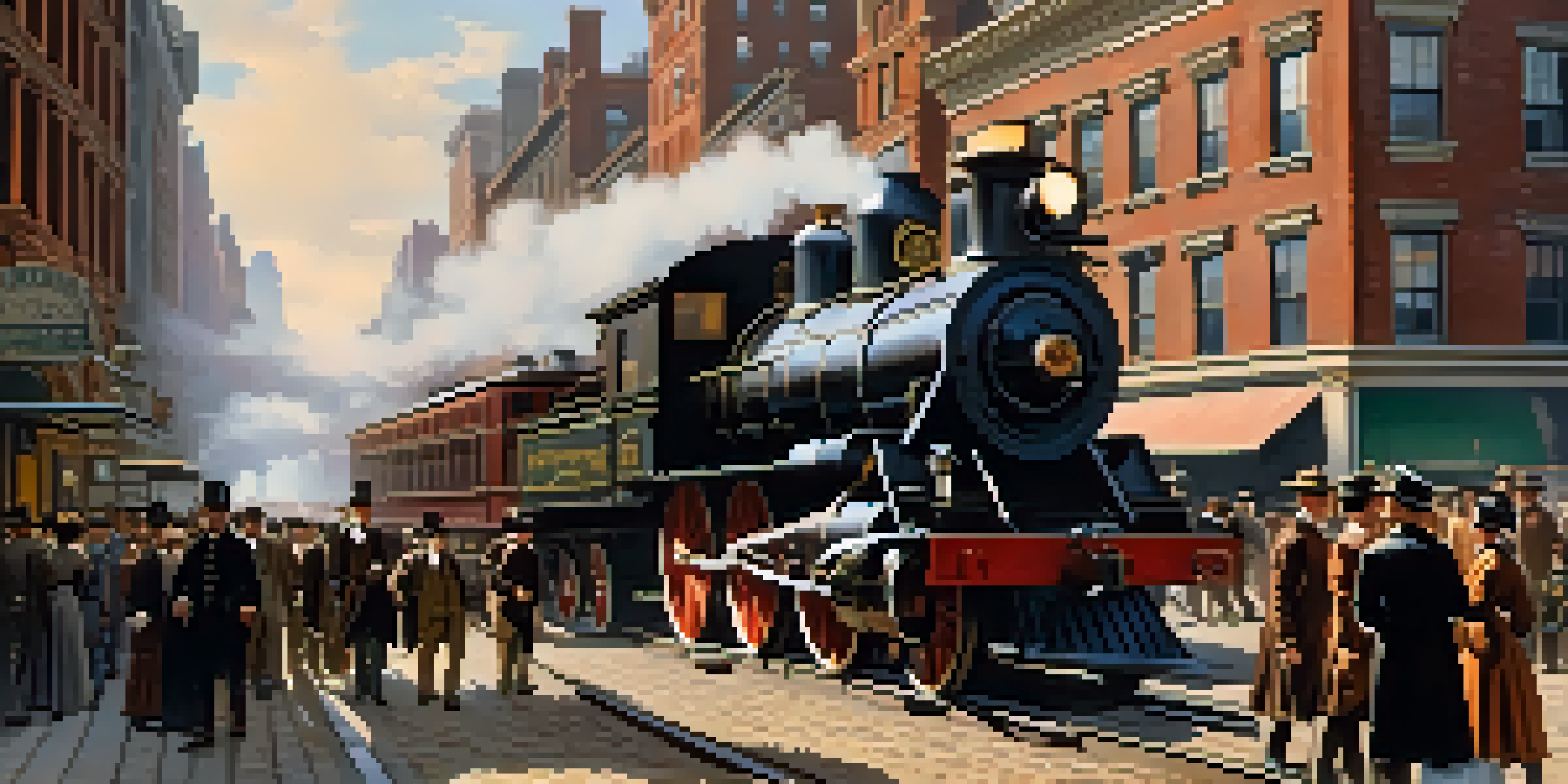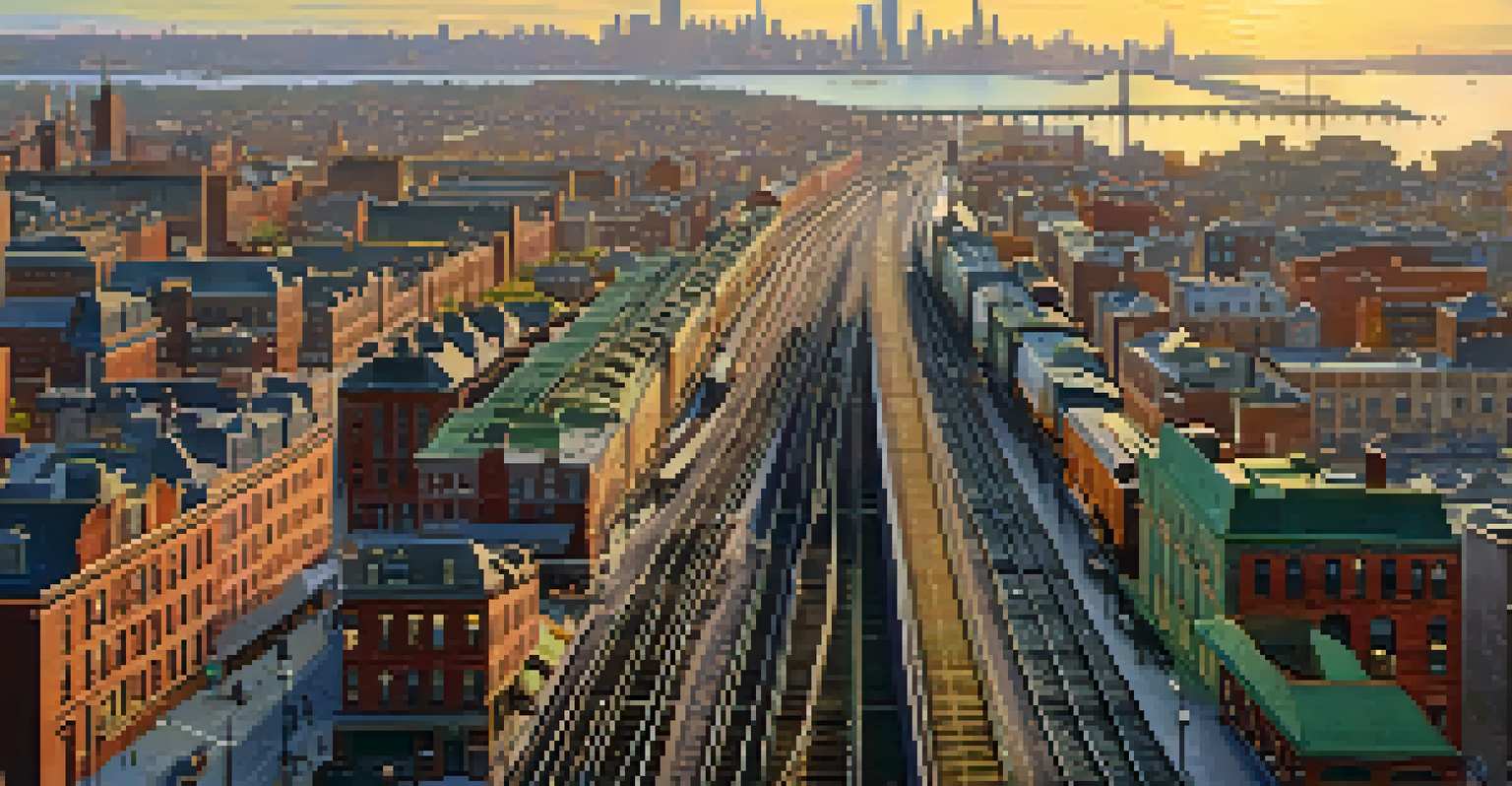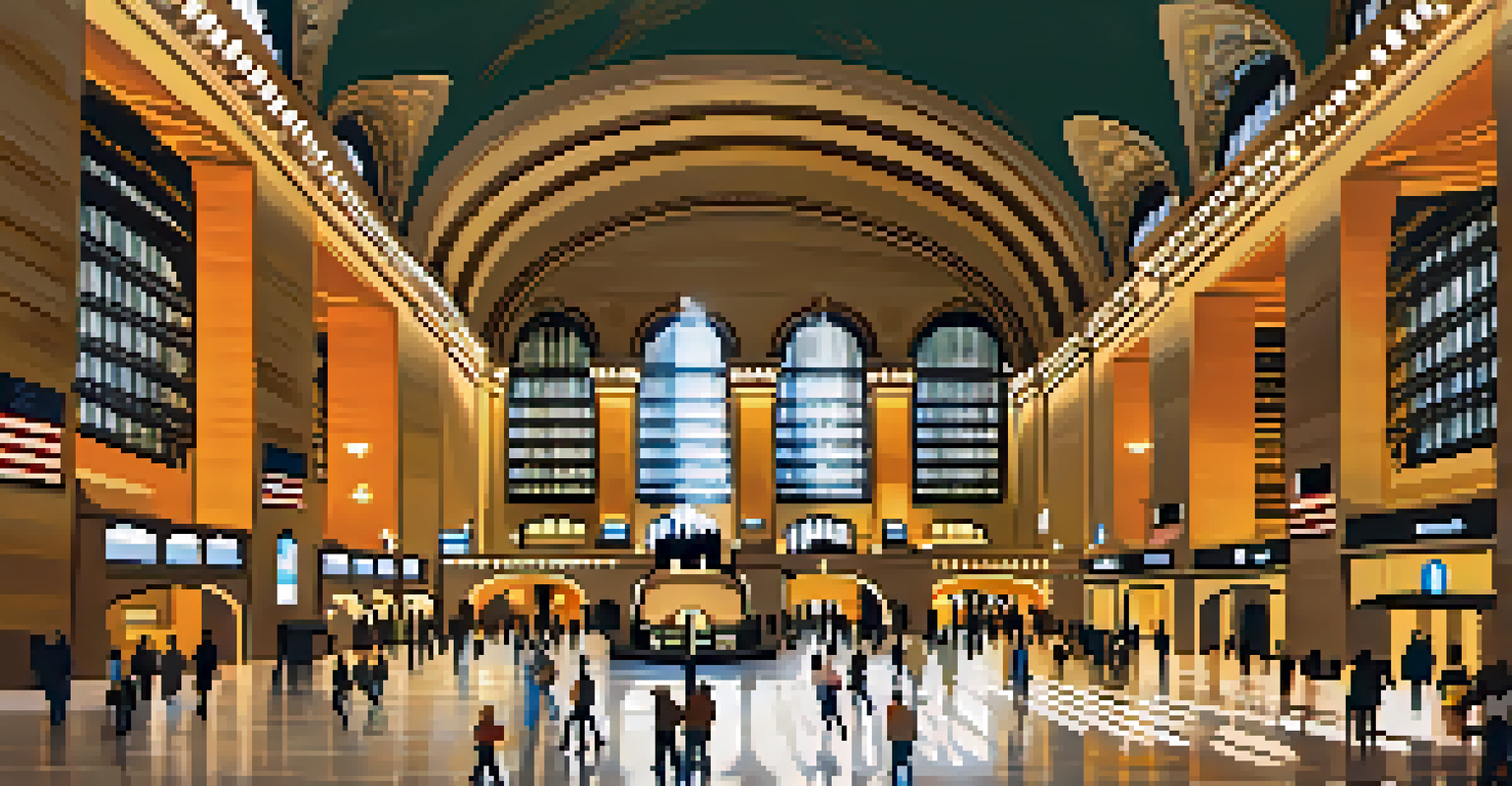The Role of Railroads in Shaping New York City’s Growth

The Birth of Railroads in New York City
In the early 19th century, railroads began to emerge as a revolutionary mode of transportation in the United States. New York City, with its strategic location, quickly became a focal point for these developments. The first railroad, the Mohawk and Hudson, opened in 1826, marking the beginning of a new era for the city.
The railroads are the arteries of commerce, the highways of trade, and the veins of our national economy.
This innovation not only made travel easier but also paved the way for greater commerce and trade. As railroads expanded, they connected New York City to other regions, facilitating the movement of goods and people. The bustling activity brought by the railroads laid the groundwork for economic growth and urbanization.
The introduction of railroads was a game-changer, allowing the city to grow beyond its original boundaries. It transformed what was once a small port town into a booming metropolis, attracting waves of immigrants and entrepreneurs eager to participate in this new economy.
Railroads and Urban Development
As railroads expanded, they significantly influenced urban development patterns in New York City. New neighborhoods sprang up around train stations, which became hubs of activity and commerce. Areas that were once considered outskirts transformed into vibrant communities, further fueling the city’s growth.

The accessibility provided by railroads made it easier for people to commute from the suburbs, contributing to the rise of residential areas outside Manhattan. This shift not only changed where people lived but also how they interacted with the city. The railroad effectively shrank distances, making the sprawling metropolis more accessible.
Railroads Transformed Urban Life
The introduction of railroads fundamentally reshaped New York City’s urban landscape, creating new neighborhoods and improving accessibility.
Moreover, railroads played a pivotal role in the city’s architectural landscape. Grand train stations, such as Penn Station and Grand Central Terminal, became iconic symbols of New York City's ambition and progress, showcasing the city’s commitment to modernity and connectivity.
Economic Impact of Railroads
The economic impact of railroads on New York City was profound. They facilitated the swift movement of raw materials into the city, fueling industries and manufacturing. This allowed local businesses to thrive and provided countless job opportunities, ultimately transforming the city into an economic powerhouse.
The city is a living organism, and the railroad is its lifeblood, flowing through its heart and sustaining its growth.
Railroads also opened up new markets for New York's goods, enabling local products to reach consumers far beyond the city limits. This expansion of trade contributed significantly to the city's GDP and established New York as a critical hub in the national and global economy.
In essence, railroads were instrumental in creating a dynamic economy that attracted investments, businesses, and skilled labor. This economic growth not only enriched the city but also enhanced its status as a leading metropolis on the world stage.
Immigration and Population Growth
The expansion of railroads coincided with waves of immigration to New York City, further shaping its demographic landscape. As immigrants arrived, many were drawn to the opportunities provided by the burgeoning railroad industry. The railroads not only transported goods but also brought in people seeking a better life.
This influx of diverse populations contributed to the city’s rich cultural fabric, making it a melting pot of languages, traditions, and ideas. The neighborhoods that developed around railroad stations often reflected this diversity, fostering a sense of community among various immigrant groups.
Economic Growth Fueled by Railroads
Railroads played a crucial role in driving economic development by facilitating the movement of goods and attracting businesses to the city.
As more people settled in the city, the demand for housing, services, and infrastructure increased, leading to further urban development. The symbiotic relationship between railroads and immigration played a crucial role in New York City’s transformation into one of the world's most vibrant urban centers.
The Role of Railroads in Transportation
Railroads revolutionized transportation in New York City, providing an efficient and reliable means of moving people and goods. The introduction of commuter trains made it possible for residents to live further from their workplaces, effectively reshaping commuting patterns. This shift not only alleviated congestion in the city but also encouraged suburban growth.
Additionally, the establishment of freight rail services allowed businesses to transport products quickly and cost-effectively. This efficiency was vital for maintaining inventory and managing supply chains, which became increasingly important as the city grew.
Overall, the railroads not only connected New Yorkers to each other but also integrated the city into a broader national transportation network. This connectivity was key to supporting the city’s economy and enhancing its role as a vital logistical hub.
Environmental Considerations of Railroads
While railroads contributed significantly to New York City’s growth, they also brought environmental challenges. The expansion of rail infrastructure often led to the displacement of communities and changes in land use that affected local ecosystems. As the city grew, the need for careful planning became increasingly evident.
Moreover, the pollution generated by steam engines and the construction of rail lines raised concerns among residents and city planners alike. These environmental impacts prompted discussions about sustainable development and the need for better urban planning strategies.
Cultural Diversity from Immigration
The expansion of railroads coincided with waves of immigration, enriching New York City's cultural fabric and fostering vibrant communities.
Today, as we look back, the lessons learned from the railroad era resonate in current urban development debates. Balancing growth with environmental sustainability remains a crucial focus for city planners aiming to create a livable urban environment.
The Legacy of Railroads in New York City
The legacy of railroads in New York City is visible in its infrastructure, economy, and cultural diversity. Many of the city’s most famous landmarks, such as the historic train stations, are testaments to the transformative power of railroads. They serve as reminders of a time when rail travel was the backbone of urban life.
Furthermore, the impact of railroads continues to influence modern transportation systems. The lessons learned from the past inform current developments in public transit, with a focus on expanding and improving rail services to meet the needs of a growing population.

Ultimately, the role of railroads in shaping New York City’s growth cannot be overstated. They were not merely transportation systems but catalysts for change, driving economic development and urban transformation that laid the foundation for the city's future.